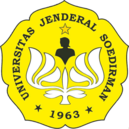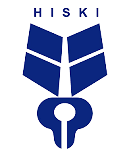Toponyms in Banyumas as Representation of Banyumas Community Culture
Abstract
Naming is searching for language symbols to describe objects, concepts, and processes by utilizing vocabulary through changes in meaning or the creation of words. Toponyms are used as the identity of a place because they come from the results of the culture of the people in the area, which originate from the reciprocal relationship with the environment, in this case, namely language. The name of the place cannot be separated from the characteristics or things related to the place, such as the name of the sub-district in Banyumas Regency. This research is descriptive qualitative. The object of study of toponyms in this research is the naming of sub-districts in Banyumas Regency, which have physical and cultural characteristics that can be traced from an event or event in the past. The toponymy of sub-districts in Banyumas Regency can be a source of local history for the Banyumas people. Myths are passed down from generation to generation as part of the local history of place names. The history of naming is an oral tradition passed down from generation to generation, so naming places has cultural value. There are also local wisdom values in the sub-district toponymy in Banyumas Regency. The research results show that the sub-district toponyms in Banyumas Regency can trace the values behind the naming stories, namely the social and cultural values of the stories or myths of the Banyumas people. This local topography value in Banyumas Regency can be used as a source of learning for the younger generation.
References
Choi, S. Hee, & Wong, C. U. I. (2018). Toponymy, Place Name Conversion and Wayfinding: South Korean Independent Tourists in Macau. Tourism Management Perspectives, 25(October 2017), 13–22. https://doi.org/10.1016/j.tmp.2017.10.007
Erom, K. (2019). Sistem Penamaan Masyarakat Manggarai : Studi Kasus dalam Perspektif Linguistik Kebudayaan. Jurnal Pendidikan Bahasa dan Sastra, 19(1), 72–85. https://doi.org/10.17509/bs
Fuad, A. D. (2019). Leksikon Makanan Tradisional dalam Bahasa Jawa sebagai Cerminan Kearifan Lokal Masyarakat Jawa. Jurnal Pendidikan Bahasa dan Sastra, 19(1), 27–36. https://doi.org/10.17509/bs
Kamonkarn, A. (2008). Toponymy, Landform and Geographical Analysis that Influence The Community’s Cultural Economics and Eco-Tourism : Case Study in The District of Muang, Mae Chan, Mae Sai,
Chiang Sean, Chiang Khong, Wieng Kaen and Teoung, Chiangrai.
Karsidi, A. (2013). Peran Toponimi dalam Pelestarian Budaya Bangsa dan Pembangunan Nasional. Bandung: Seminar Nasional Toponimi.
Kostanski, L. (2016, Januari 1). Toponymic Attachment (C. Hough, Ed.). The Oxford Handbook of Names and Naming, hal. 0. https://doi.org/10.1093/oxfordhb/9780199656431.013.42
Koswara, D., & Hermawan, B. (2021). A Semiotic Analysis of Toponymy in Classic Sundanese Literary Texts. Indonesian Journal of Applied Linguistics, 10(3), 615–627. https://doi.org/10.17509/ijal.v10i3.31743
Kridalaksana, H. (2008). Kamus LInguistik. Jakarta: PT Gramedia.
Lauder, R. M. T. M. (2013). Peran Toponimi dalam Pelestarian Budaya dan Pembentukan Jati Diri Bangsa. Seminar Nasional Toponimi. Bandung.
Liliweri, A. (2014). Pengantar Studi Kebudayaan. Bandung: Nusa Media.
Mahsun. (2012). Metode Penelitian Bahasa : Tahapan Strategi, Metode dan Tekniknya. Jakarta: Rajawali Press.
Majnemer, J., & Meibauer, G. (2023). Names from Nowhere? Fictitious Country Names in Survey Vignettes Affect Experimental Results. International Studies Quarterly, 67(1), sqac081. https://doi.org/10.1093/isq/sqac081
Martha, S. (2007). Peran Toponimi untk Kepentingan Sosial, Ekoomi dan budaya. Risalah Workshop Toponimi : Kebijakan dan Implementasi Pembakuan Nama Rupabumi. Jakarta: Pusat Pemetaan Dasar Rupabumi dan Tata Ruang Bakosurtanal.
Moleong, L. J. (2005). Metode Penelitian Kualitatif. Bandung: Reaja Rosda Karya.
Nash, D., & Simpson, J. (2011, November 24). Toponymy: Recording and Analysing Placenames in a Language Area (N. Thieberger, Ed.). The Oxford Handbook of Linguistic Fieldwork, hal. 0. https://doi.org/10.1093/oxfordhb/9780199571888.013.0018
Prasetyo, Y. dan A. F. . (2015). Pendekatan Toponimi dalam Penelusuran Sejarah Lokal Nama Kecamatan Sidoarjo. Jurnal Edukasi., Volume 3 N, 165–174.
Rahardi, K. (2020). Depicting Pragmatic Meanings of Covid-19 Hoaxes in Social Media : Cyber-Pragmatic PerspectiveN SOCIAL MEDIA : CYBER-PRAGMATIC PERSPECTIVE. Jurnal Kata : Penelitian tentang Ilmu Bahasa dan Sastra, (7), 261–272. https://doi.org/10.22216/kata.v4i2.5024
Rais, J. (2008). Toponimi Indonesia : Sejarah Budaya Bangsa yang Panjang dari Permukiman Manusia dan Tertib Administrasi. Jakarta: PT Pradnya Paramita.
Ruskhan, A. G. (2011). Keunikan Nama-Nama Geografi Indonesia : Dari Nama Generik ke Spesifik. Jurnal Pendidikan dan Kebudayaan, 17, Nomor.
Rusu, M. S. (2019a). Mapping the Political Toponymy of Educational Namescapes: A Quantitative Analysis of Romanian School Names. Political Geography, 72(May 2018), 87–98. https://doi.org/10.1016/j.polgeo.2019.04.007
Rusu, M. S. (2019b). Shifting urban namescapes: street name politics and toponymic change in a Romanian(ised) city. Journal of Historical Geography, 65, 48–58. https://doi.org/10.1016/j.jhg.2019.07.001
Rusu, M. S. (2020). Political patterning of urban namescapes and post-socialist toponymic change: A quantitative analysis of three Romanian cities. Cities, 103(August 2019), 102773. https://doi.org/10.1016/j.cities.2020.102773
Simpson, N. Dan. (2017). Kajian Nilai pada Toponimi di Wilayah Kota Cirebon sebagai Potensi Sumber Belajar Geografi. Jurnal Geografi, 4, 55.
Triana, H. W., Kustati, M., Nelmawarni, N., & Reflinaldi, R. (2022). West Coastal Toponyms of Sumatra Island: A Corpus Linguistics Study. OKARA: Jurnal Bahasa dan Sastra, 16(1), 90–108. https://doi.org/10.19105/ojbs.v16i1.6163
Wasro. (2012). Model Pembelajaran Geografi Berbasis Toponim Dengan Strategi Produksi Film Dokumenter Lingkungan. Journal of Educational Social Studies, 1(2).
Zuhdi, S. (2013). Sejarah sebagai Pengingat dan Pemakna. Seminar Nasional Toponimi. Bandung.

This work is licensed under a Creative Commons Attribution-ShareAlike 4.0 International License.
Authors who publish with Jurnal Ilmiah Lingua Idea agree to the following terms:
- Authors retain copyright and grant the journal right of first publication with the work simultaneously licensed under a Creative Commons Attribution License (CC BY-SA 4.0) that allows others to share the work with an acknowledgment of the work's authorship and initial publication in this journal.
- Authors are able to enter into separate, additional contractual arrangements for the non-exclusive distribution of the journal's published version of the work (e.g., post it to an institutional repository or publish it in a book), with an acknowledgment of its initial publication in this journal.
- Authors are permitted and encouraged to post their work online (e.g., in institutional repositories or on their website) prior to and during the submission process, as it can lead to productive exchanges, as well as earlier and greater citation of published work.





















.png)






